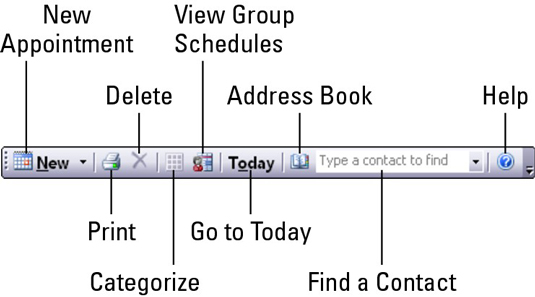Some kiddos' potty programs are thrown off track by outside caregivers who really, truly mean well — but they just don't get why you think consistency from home to daycare is such a big deal.
However, whether caregivers understand or not, most are willing to listen to your comments. Tell them that you believe that changing approaches will mix up your tiny tyke who is barely used to using the toilet, anyway.
Getting all caregivers to be consistent
Go ahead and assume that most outside caregivers have their own ideas on potty training, so inform yours — right after Potty-Training Weekend — that you have a potty plan for your child.
Telling the caregiver, "Here's what we do" at the very beginning is so much easier than trying to back track. (Think how much you've liked bosses who made their expectations clear upfront, versus those who told you what they wanted after you'd screwed up.)
Daycare workers tend to use a one-size-fits-all method that works well with kids who are totally ready to cooperate. And your tot may not fit in that category.
A center's method is usually based on the owner/director's potty-training beliefs, so the approach can range from as rigid as Nurse Ratched of One Flew Over the Cuckoo's Nest, to as quietly nurturing as Mr. Rogers from Mr. Rogers' Neighborhood. Basically, you can bet that few daycare centers do much personalizing of potty training. On the other hand, their method probably won't be counter to the Potty Training For Dummies way, except for being a bit less flexible and a bit more blame shifting. Most daycare personnel simply don't have the time for one-on-one teaching.
Instead of asking a daytime caregiver what approach she takes with kids in potty training, just give her your handout and ask her to follow it. Otherwise, you'll have to say, "Your way doesn't suit me." Yuck. Ouch.
So clearly, emphatically, and tactfully state your desires: "Please, during the day while I'm at work, follow this plan for helping potty train Tommy. She needs help, of course, but no forcing or punishing. She's going to make mistakes, and pressure just won't help — I'm sure of it."
Youngsters can get confused easily. So, the best way to handle the possibilities for divergent ideas is to jot down the 1-2-3 of your child's potty regimen and hand it to caregivers. Leave no room for improvisation. Perhaps that will stave off the dicey situation of discovering that someone's doing things differently at daycare, and your kid is getting terribly confused. That forces you into a corner where you must ask for their cooperation and a switcheroo back to your way.
If relatives or friends also care for your child from time to time, make them copies while you're at it. Let your child know what you're doing and why. "This way, Aunt Camilla and cousin Gina and Mrs. Fritz at daycare all will know what you like to do when it's time to go potty."
Giving all caregivers the page
Make a big point of giving your lead caregiver a page of instructions. You may want to set up an appointment so you'll really have her attention. Explain that you think you've found the best way to potty train your child, and you'll appreciate her compliance with the plan. Even go so far as to point out that you don't want anyone who takes care of Ava to meet you with a negative report at pickup time: "Your child was a total pee-renegade today — she wet her pants!" None of that stuff, thank you very much.
But do ask your caregiver to jot down an end-of-week progress report so that the wee lassie's potty deeds won't be discussed in front of her — unless, of course, we're talking rave reviews. Request four weeks' worth of progress reports, and be sure she knows you mean simply a quick rundown — nothing elaborate or typewritten.
Tell your caregiver, nanny, or relative: "I'd appreciate it very much if you'd follow this plan because we started it over the weekend, and Ally is doing just great. Otherwise, I'm afraid she'll get confused. Thanks so much, in advance, for your help."
Emphasize that you know this person (relative, nanny, caregiver) will be a major player in helping your child succeed. "I really appreciate you being up for this."
Here's the written plan that you can hand out:
1. Take the toddler to the potty every two hours if possible. (If she refuses, don't push it.) Be sure she potty-sits shortly after eating and drinking. Gentle prompting is fine.
2. Ask the child to tell you when she feels like she needs to go.
3. Give praise, even if nothing happens during the potty-sit. Don't apply any pressure. If she goes, she goes; otherwise, just say you're glad she tried.
4. Please don't make the child feel guilty if she messes up her pants. Just change them, and put on fresh clothing (if necessary). And, please say that you bet she will get it right the next time.
5. Let her pull up underpants and clothes, even when these efforts are sloppy and awkward. Don't jump in and straighten up. She needs to feel as if she's succeeding, so right now, tidiness doesn't count.
6. Tell the toddler that she has done something very good when she actually pees or poops in the potty.
When you hand over the poo-and-pee-plan for your child's day, make sure the caregiver understands that you have faith in her attitude of teamwork. Word this in a way that shows your faith in her: "Of course, I never doubted for one minute that you wouldn't be on board for this, but I just thought I'd write it down, for your convenience. I know you have a million things on your mind every day."
dummies
Source:http://www.dummies.com/how-to/content/potty-training-at-daycare.html




